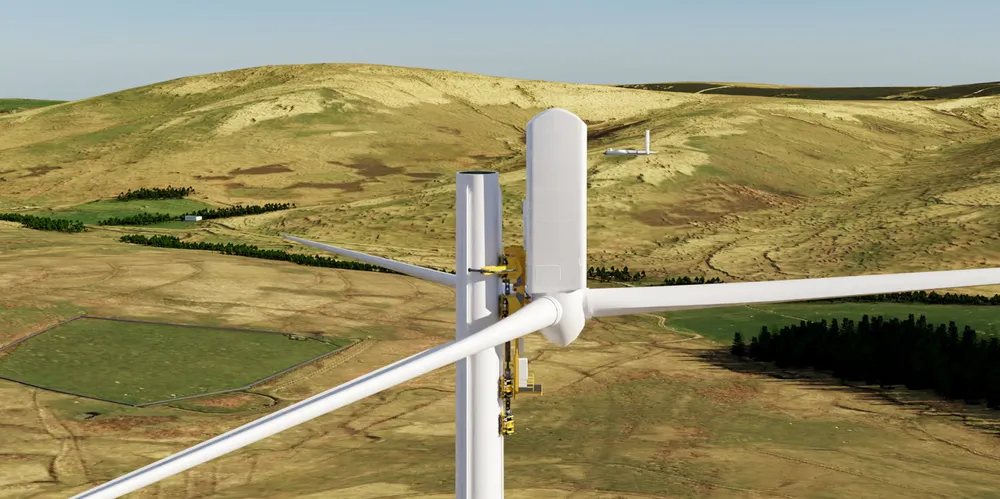'Self-assembling' 15MW floating wind design moves ahead with key deal for UK prototype
Start-up SenseWind's concept would allow for tower and nacelle to self-construct removing the need for high-price cranes as sector ramps up serial production ambitions

A potentially revolutionary ‘self-assembling’ floating wind turbine concept that could be scaled up for units with namesplates of 15MW has taken a key step forward with finalisation of the last major contract needed to build its onshore pilot project.
UK start-up SenseWind, which is developing its Sense Set (self-erecting tower) and Sense RNA (rotor nacelle assembly) technology to remove the requirement for high-price cranes in the manufacture of deepwater wind units, has awarded Denmark’s SM Industries the order for a first-of-its-kind ‘triple-rail’ tower for the 2MW prototype, slated to be built this year.
“Working in collaboration with Aerotrope, a UK-based renewables engineering company, we look forward to SM Industries bringing Danish know-how and best-in-class insights to the tower design for serial production,” said SenseWind chairman Julian Brown.
Aerotrope CEO Chris Hornzee-Jones stated: “The collaboration with SM Industries enables us to ensure that efficient manufacturing approaches are considered at every stage of the design process.”
SM Industries head of project development Erhard Frederiksen said the role of becoming a partner “in both maturing the new 2MW tower design as well as preparing it for serial manufacturing by making it as cost-effective in the supply chain as possible” was “thrilling”, adding: “Once commercialised [for 10-15MW turbines], the scale of this ‘standard’ tower will fit our manufacturing capabilities perfectly.”
The part-scale demonstration project, partly funded by a UK government’s floating offshore wind grant scheme, is timed to have the full-size version ready for projects built under Scotland’s current INTOG and ScotWind auctions, with construction “later in 2023 with testing to run through late 2024”.